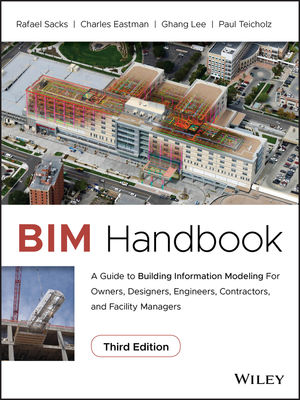Building Safety 101: Understanding the Basics for a Safer Tomorrow
.jpg?1715778122)
Photo courtesy of Pixabay.
Building safety includes a wide range of best practices, including implementing fire suppression systems, conducting regular inspections on existing buildings, providing clear access to emergency exits, employing sustainable water and energy usage and more.
By understanding and adhering to these practices, communities can mitigate the risk of accidents, and promote sustainable development and resilience efforts against potential disasters – ultimately creating a secure environment for everyone.
Every year during May, the International Code Council holds its Building Safety Month campaign to help raise awareness about the importance of building safety and educate the public on how to ensure their communities are resilient and sustainable.
Responsibility for building safety is crucial for us all, starting with understanding the basics and keeping our friends, families and neighbors safe.
Understanding Building Codes and Standards
Modern building codes and standards help ensure the design and construction of safe, sustainable and affordable buildings.
These codes are developed through careful deliberation and expert insight, created to safeguard lives and property in the face of potential hazards. Understanding where they come from can help us see why they're important, however, the true strength of building codes lies in their adoption and proper implementation.
At the forefront of these efforts are organizations like the International Code Council, whose code development process for the International Codes® (I-Codes) has provided the highest level of safety in the world for more than 90 years.
You can contact your local building department to understand which building codes and standards have been adopted in your community. Embracing the importance of these codes means prioritizing safety and resilience, laying the foundation for a secure built environment for generations to come.
Building Safety at Home
Building safety isn't just the responsibility of code officials and industry professionals, it's something every person can actively contribute to as well.
Small actions at home, such as installing smoke alarms and carbon dioxide detectors, can make a big difference in preventing disasters and protecting lives. These devices can be literal lifesavers, alerting you to danger before it's too late.
It is also important to educate yourself and your family about fire safety protocols. Knowing what to do in an emergency can be the difference between panic and a quick, safe evacuation. Maintaining a clear escape route is crucial to ensure there are no obstructions in case of an emergency, especially during a fire.
Additionally, if you're into DIY projects, consider incorporating safety measures into your home improvements. From reinforcing structures to ensuring electrical safety, every effort adds another layer of protection to your home and community. When doing a DIY project, contact your local building department to make sure you are compliant with applicable building codes and standards.
By taking these individual actions, you not only safeguard your own home but also contribute to a safer environment for everyone.
Building Safety in Your Community
Community involvement is essential for ensuring building safety, as it empowers individuals to actively contribute to the resilience of their neighborhoods.
Advocating for the adoption and implementation of modern building codes, such as the I-Codes, is a crucial step in this process. By working together, communities can promote these codes, fostering safer environments for all. Also, engaging in disaster preparedness initiatives at the community and individual levels is vital for minimizing potential risks.
Additionally, advocating for accessibility features in buildings is crucial to ensure equal access and inclusion for all members of your community, including those with disabilities. These features not only enhance the quality of life for individuals with disabilities but also benefit everyone such as parents with strollers or elderly individuals with mobility limitations.
Building codes incorporate accessibility features by mandating specific requirements for things like automatic doors and bathroom facilities, ensuring that new and existing buildings are accessible to all.
Building Safety Careers and Membership Organizations
Helping to make communities safer begins with active participation, and becoming a building safety professional can give you the opportunity to make a real difference. A career in building safety allows individuals to play an indispensable role in ensuring the buildings in their community meet specific safety standards. To learn more about the different career opportunities within the industry, check out Week 3 of the Code Council’s Building Safety Month campaign.
Additionally, by joining a building safety member organization, like the Code Council, individuals gain access to a wealth of resources, networking opportunities and professional advancement. However, the benefits extend far beyond personal growth, as community involvement lies at the heart of these member organizations.
Building Safety Education and Awareness
Building Safety Month serves as a platform for raising awareness about the importance of building safety in communities. A key aspect of its mission involves educating individuals about various building safety measures and practices.
Through this annual campaign, individuals can gain access to a wealth of educational resources aimed at enhancing their understanding of building safety best practices. From informative brochures to practical tip sheets, Building Safety Month provides a range of tools to empower communities to prioritize safety in their built environments.
By utilizing these resources and understanding building safety, individuals can make informed decisions and take proactive steps to ensure the sustainability and resilience of their surroundings.
To learn more about building safety and how to ensure you are taking proactive steps to ensure the safety of your home, check out the Code Council’s Building Safety Month website.
Looking for a reprint of this article?
From high-res PDFs to custom plaques, order your copy today!








